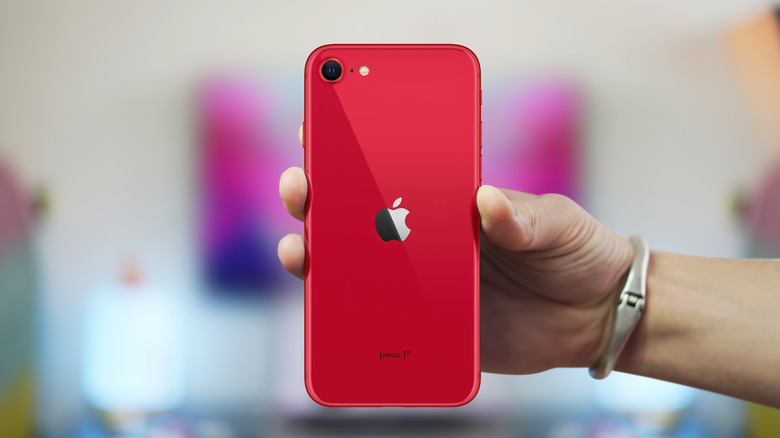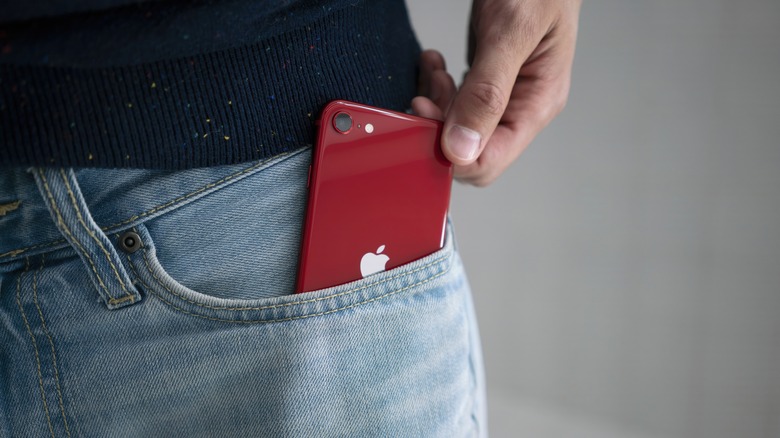iPhone SE 4 Rumor Suggests There's A Long Wait Ahead
Apple's low-cost iPhone models sold under the iPhone SE branding have had an interesting history. After announcing the first-gen iPhone SE in 2016, it almost seemed as if Apple had given up on these devices — until the company launched the second-gen iPhone SE in 2020. Then, two years later, in March 2022, Apple gave the SE series another leash on life with the launch of the iPhone SE (2022). While shipment figures for the iPhone SE series have not been encouraging, indications are Apple is pressing ahead with plans for a new generation of iPhone SE.
However, there are conflicting reports about the possible launch window for the fourth-generation iPhone SE. While earlier reports indicated that the iPhone SE 4 could break cover in 2024 — exactly two years since the release of the iPhone SE 3 — we now have a fresh set of rumors coming in about the possibility of the launch window being moved further ahead. The report comes courtesy of MacRumors and cites noted Apple analyst Jeff Pu of Haitong International Securities.
In a recent research note, Jeff indicated that Apple is unlikely to launch the iPhone SE 4 next year. Instead, the company is now looking at a prospective 2025 launch date for the device. Besides suggesting a possible delayed launch for the iPhone SE 4, Pu has also indicated that this new phone will also feature an in-house 5G modem made for Apple by TSMC.
iPhone SE 4: What we know so far
The last time we talked about the iPhone SE 4 was in February 2023, noting the expected significant changes coming to the SE lineup. However, except for the possibly revised launch date for the device, nothing significant has changed as far as the rumored specs of the device are concerned.
As previously reported, the next iPhone SE is likely to feature a 6.1-inch display, making it significantly larger than the 4.7-inch panel on the current generation of iPhone SE. There is also talk about Apple opting to equip the phone with an OLED panel. If this happens, it would also mean that the entire lineup of iPhones would have moved to OLED screens. While the move to OLED will ensure an overall better viewing experience, don't expect the iPhone SE's display to be as good as the ones on its more expensive iPhone models.
While it is unclear at this moment whether Apple's more expensive iPhone lineup would also switch to Apple's own 5G modems, the chances of that happening are low. Jeff Pu has already indicated that Apple's TSMC-made 5G modems would be based on a 4nm manufacturing process and that they would only support sub-6GHz bands. Given that mmWave support is crucial for Apple's flagship iPhone models, Apple would either need to work with TSMC to develop a separate 5G modem or continue depending on Qualcomm for mmWave support.

